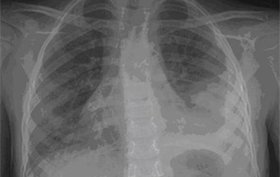The malpractice debate continues, like a rerun of Quincy, M.E. – you know the ending, but pretend to be surprised, if only to justify why you would watch the same show twice (or, in this case, many more). The issue of medical liability, while it has received little attention I the health reform debate, is perhaps the best example of why changing healthcare, no matter where you want it to go, is so difficult to …
Read MoreDeveloping Data: November, 2009
In early 2008, UCA revamped its annual survey in conjunction with researchers at Massachusetts General Hospital and Harvard University with the goal of assuring that the UCA Benchmarking Committee’s efforts produced a scientifically valid report. Here, we present some of the data from this landmark survey, to which 436 urgent care centers responded. In this issue: Which payors foot the biggest portion of the bill among responding urgent care centers? * Includes employer contracts and …
Read MoreS9083 & Secondary Insurance, Laceration Repair, and More
Q. We bill S9083 to several carriers. Occasionally, a patient will have secondary insurance. If the primary insurance is contracted to pay S9083 code but transfers the balance to the deductible, how do we bill the secondary carrier if they do not accept the code? Question submitted by Paula Seify, Back Office MD A. Many secondary payors do not accept S9083, but these payors still will often cover the actual services that were rendered under …
Read More
November 2009
Clinical Challenge: November, 2009
In each issue, JUCM will challenge your diagnostic acumen with a glimpse of x-rays, electrocardiograms, and photographs of dermatologic conditions that real urgent care patients have presented with. If you would like to submit a case for consideration, please e-mail the relevant materials and presenting information to [email protected] The patient is a 19-year-old male who complains of pain after receiving a blow to the shoulder. Range of motion is limited due to pain. The patient …
Read More82-year-old man slips and takes a blow to his shoulder
The patient is an 82-year-old man who slipped on the street, experiencing a blow to his right shoulder. He has significant local swelling in the injured shoulder (specifically, over the acromioclavicular joint), as well as significantly limited range of motion. His distal pulses are normal. View the x-ray taken and consider what your diagnosis and next steps would be.
Read More
7-year-old boy with persistent fever and cough
The patient is a 7-year-old boy who presents to urgent care at midnight with a four-day history of fever and cough. Two days prior, a throat culture administered elsewhere showed nothing suspicious. The parents brought him to urgent care tonight because of subsequent increasing chest pain. On exam, you find the child is not in respiratory distress, but has decreased air entry on the left side of his chest. His temperature is 101.3 degrees F, …
Read MoreValuation of an Urgent Care Clinic
Urgent message: Despite the fact that underlying principles are the same as for other settings, it behooves the urgent care operator to consider factors unique to the urgent care arena when determining the value of the practice. By Keith Borglum, CHBC How much is your practice worth? This is a simple question with a complex answer. There are many books on the topic—and a fair amount of debate—and the answer differs depending on the particular situation …
Read MoreAbstracts in Urgent Care: October, 2009
Another Validation of Clinical Assessment and D-Dimer to Rule Out PE Key point: Among patients with low or intermediate risk, the sensitivity and negative predictive value of D-dimer testing were 100%. Citation: Gupta RT, Kakarla RK, Kirshenbaum KJ, et al. D-dimers and efficacy of clinical risk estimation algorithms: Sensitivity in evaluation of acute pulmonary embolism. AJR Am J Roentgenol. 2009; 193: 425-430. Despite research showing that clinically important pulmonary embolism (PE) can be excluded when …
Read MoreDuty to Report
A few years ago, in a semi-rural town in Arizona, a woman brought her 4-year-old son to a physician assistant named James, who staffed a walk-in clinic. James knew the boy and his family very well. He was essentially their PCP and had treated the little boy in the past. In fact, he watched his grow from a toddler to a rambunctious little bundle of energy. On this particularly visit, the little boy had a …
Read More